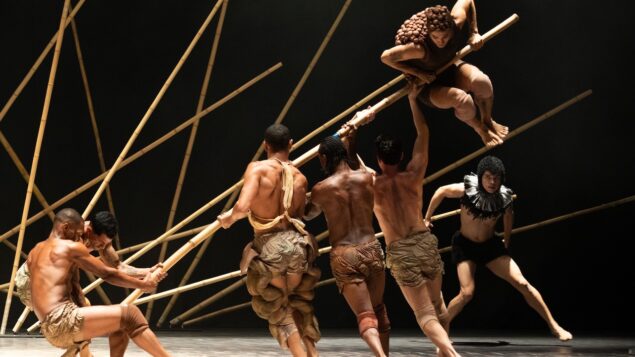Deborah Colker, a renowned Brazilian dancer, found herself at home last Sunday in Rio de Janeiro, changing the clothes of her 5-year-old grandson, when she suffered a lumbar contraction. Trying to alleviate the sudden pain, she reached out to her doctor, who advised painkillers, antipyretics, warm compresses, and rest.
However, Colker is no stranger to pushing through discomfort. The next day, she made a 10-km journey from Jardim Botânico to Glória, answering to her charge at Deborah Colker Dance Company with a warm towel pressed to her lower back. This kind of dedication is necessary in her line of work, according to the 63-year-old grandmother. “I am a person who challenges the body all the time and, for the dancer, discipline is fundamental, I cannot be still for two, three days,” declared Colker.
Colker has no time to spare as her latest spectacle, “Sagração,” premiered in March in Rio and has since toured five cities in the South and arrived in São Paulo, at the Santander Theater. The piece is a Brazilian rendition of the classic “The Rite of Spring,” composed by Russian Igor Stravinsky in 1913. The original music is known for challenging the conventions of classical music with its varying rhythms and fragmented melodies.
In this reimagining, the ballet resembles a primitive Brazil and incorporates elements like bamboo canoes, indigenous huts, forests, and flutes. “I messed with a European bible, of course, with responsibility, doing it my way and brought the Rite to primitive Brazil, to show our origins, the forests, the indigenous,” justified Colker.
Much like the challenging rhythms and fragmented melodies within Stravinsky’s score, the Deborah Colker Dance Company has faced its share of difficulty. After founding her contemporary dance company in 1994, Colker balanced teaching with seeking sponsors to fund the dancers’ sustenance. At the best of times, she faced dismissive investors. In leaner periods, the survival of the company hinged on international gigs like her 2009 creation and direction of “Ovo,” a Cirque du Soleil spectacle that brought some financial relief.
Deborah Colker’s journey has been emblematic of challenging rhythmic patterns and fragmented struggles just like Stravinsky’s unprecedented composition a century ago. Regardless of the obstacles she faced, saint or sinner, Colker’s dedication to her art form symbolizes a “sagração” in itself, a rite of passage through changing times and personal challenges, making her an undeniable icon in the world of dance.
